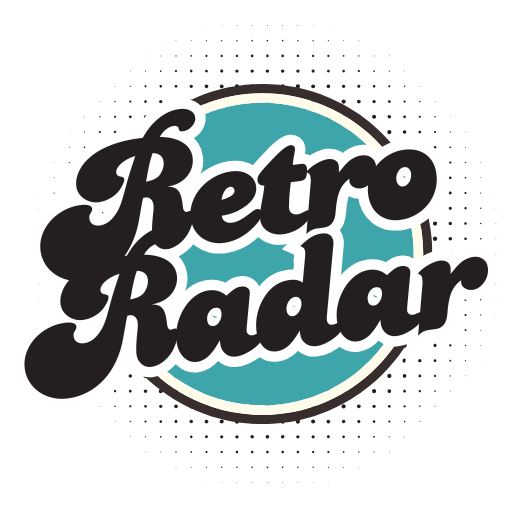10 Strict Dress Codes That Defined the 1950s
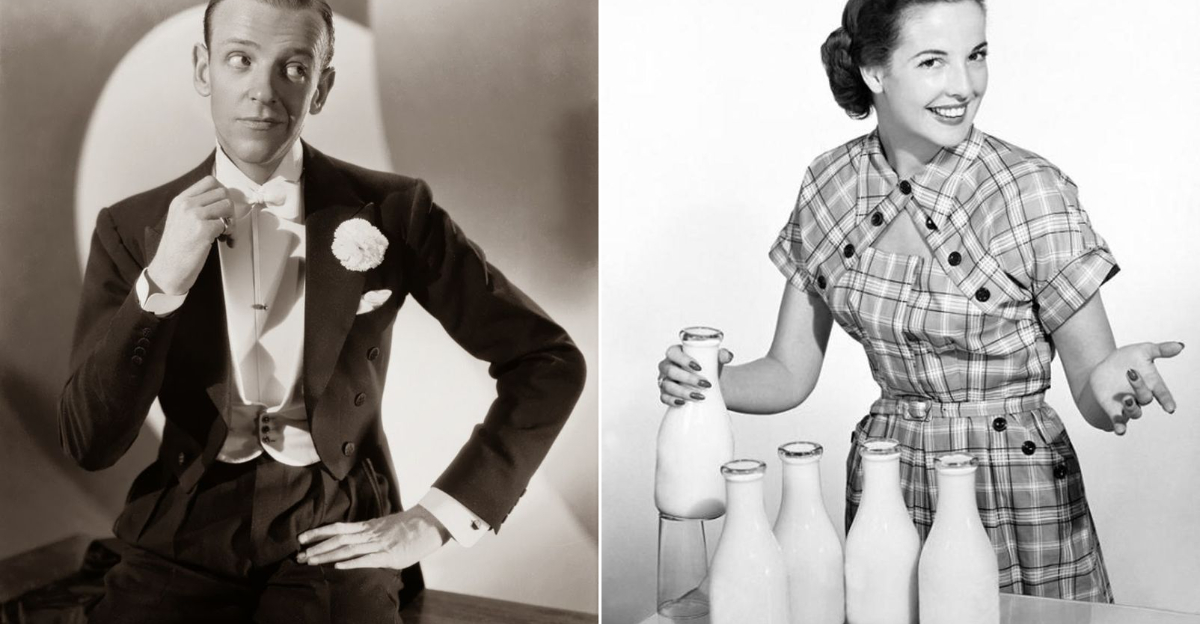
The 1950s were defined by a strict and conservative approach to fashion, where dress codes weren’t just guidelines but societal expectations that reinforced gender roles and social standing.
Men wore perfectly tailored suits, while women embraced elegant dresses and pearl necklaces, with every outfit carefully chosen to reflect conformity and respectability. Despite the post-war optimism, the decade imposed rigid standards of appearance.
Join us as we explore ten dress codes that offer a window into the cultural norms and sartorial expectations of this iconic era.
1. Women’s Day Dresses
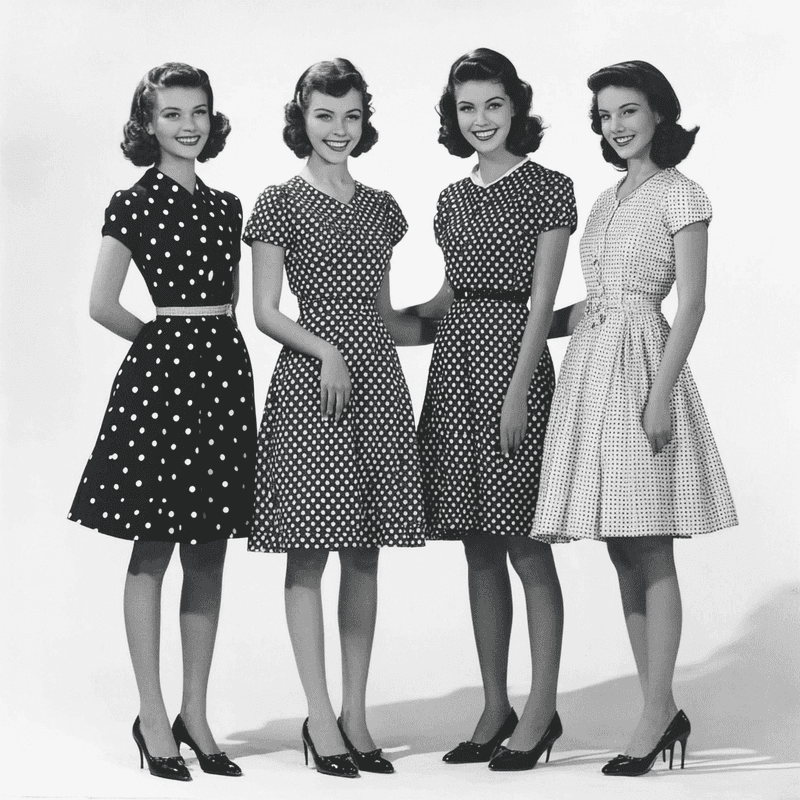
Women in the 1950s were expected to maintain a polished appearance, even during daytime errands. Day dresses were designed with modesty in mind, often featuring knee-length skirts, fitted waists, and floral patterns. These dresses symbolized femininity and respectability.
A chic belt often accentuated the waist, and modest necklines were common. Accessories like pearl earrings and kitten heels complemented the look, enhancing the overall elegance.
The cultural significance lay in the way these dresses upheld traditional gender roles, emphasizing a well-groomed image for the homemaker. This attire highlighted the era’s domestic ideals.
2. Men’s Business Suits

Men’s business attire in the 1950s was synonymous with formality and professionalism. Dark wool suits, typically in navy or gray, were the standard, reflecting authority and competence.
Crisp white shirts paired with thin ties completed this polished look. Hair was neatly combed, often slicked back with pomade, adding to the immaculate presentation.
The dress code was a declaration of one’s social standing and dedication to their career. This era’s sartorial norms underscored the importance of appearance in defining professional success and respectability.
3. School Uniforms

School uniforms in the these years were a testament to the values of discipline and conformity. Boys typically wore white shirts and trousers, while girls donned plaid dresses with pinafores.
These uniforms fostered a sense of equality among students, reducing distractions and emphasizing academics. Hair was expected to be tidy and shoes polished.
The focus on uniformity reinforced societal expectations, preparing children for the structured roles they were to assume. These dress codes were not just about appearance; they were integral to instilling respect for authority and fostering a cohesive educational environment.
4. Women’s Evening Gowns

Evening gowns epitomized glamour and sophistication. Women attending formal events wore floor-length gowns made from luxurious fabrics like satin and silk.
The silhouettes often featured off-the-shoulder necklines, exuding femininity and elegance. Long gloves and small clutches were essential accessories, completing the sophisticated ensemble.
These gowns were symbols of status and social class, reflecting the post-war prosperity. The emphasis on opulence and grace highlighted the era’s desire for refinement and the celebration of traditional femininity in social settings.
5. Casual Men’s Wear
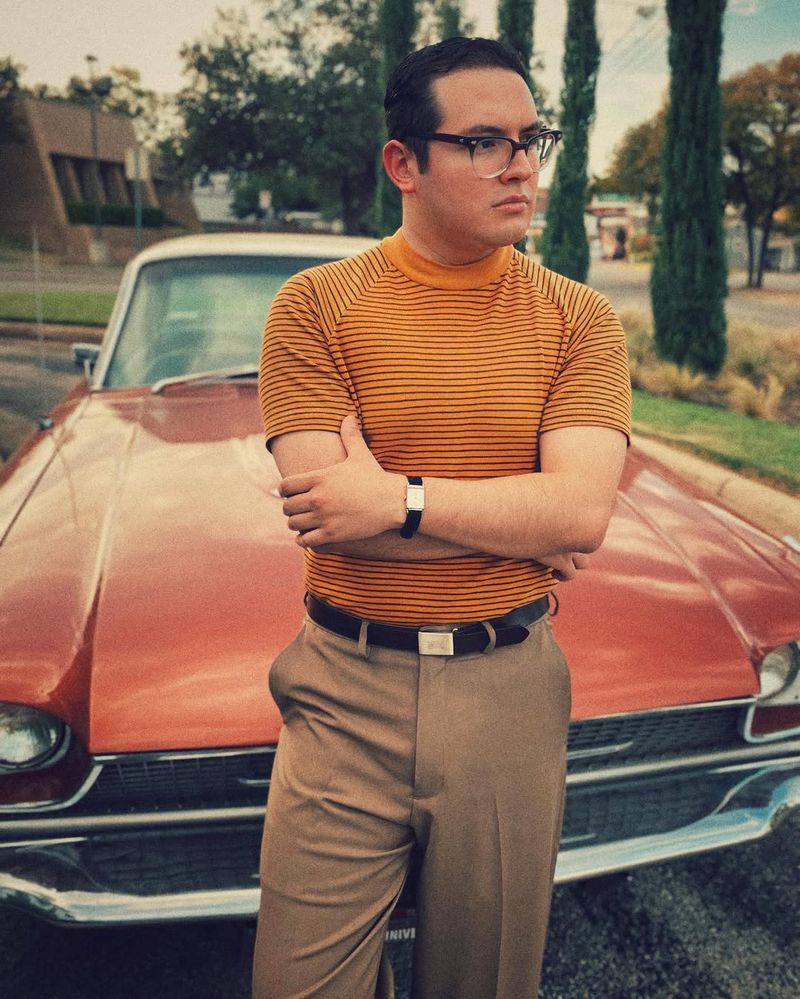
Casual wear for men in the 1950s embraced a more relaxed yet still structured look. Short-sleeve button-up shirts with subtle prints became popular for leisure activities.
Paired with chinos or slacks, and loafers, this attire was ideal for informal gatherings, like backyard barbecues. It maintained the clean-cut image expected of men, even in casual settings.
This shift toward casual wear reflected the growing emphasis on leisure time and family. Yet, even in relaxation, the importance of appearance was never compromised, underlining the decade’s focus on maintaining a polished look at all times.
6. Teenage Fashion

Teenagers in the 1950s began to carve out a culture distinct from adults, and fashion played a crucial role. Girls often wore poodle skirts, paired with blouses and cardigans.
Boys favored leather jackets and jeans, a nod to the rebellious spirit of the era. Saddle shoes were a staple for both genders, completing the youthful look.
This fashion movement signaled a shift towards greater self-expression among youth. While still adhering to certain societal norms, teenagers used fashion to assert their identity, paving the way for more relaxed and varied styles in subsequent decades.
7. Women’s Office Attire
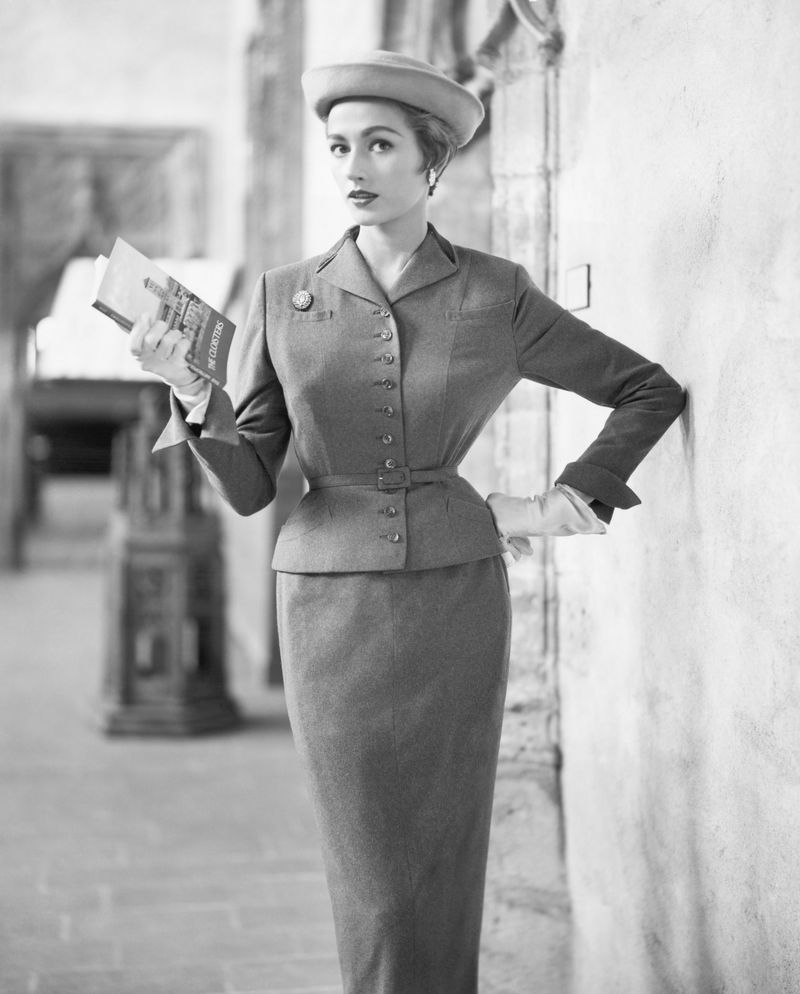
In the workplace, women in the 1950s were expected to present a professional image through carefully chosen attire. Pencil skirt suits, paired with structured jackets, were the norm in office settings.
These suits emphasized a woman’s figure while maintaining modesty and professionalism. Hair was styled neatly, often in a bob or curled, and subtle makeup was applied.
This dress code was a reflection of the era’s limited but growing opportunities for women in the professional sphere. It balanced femininity with authority, allowing women to navigate the expectations of both the corporate world and traditional gender roles.
8. Military Uniforms
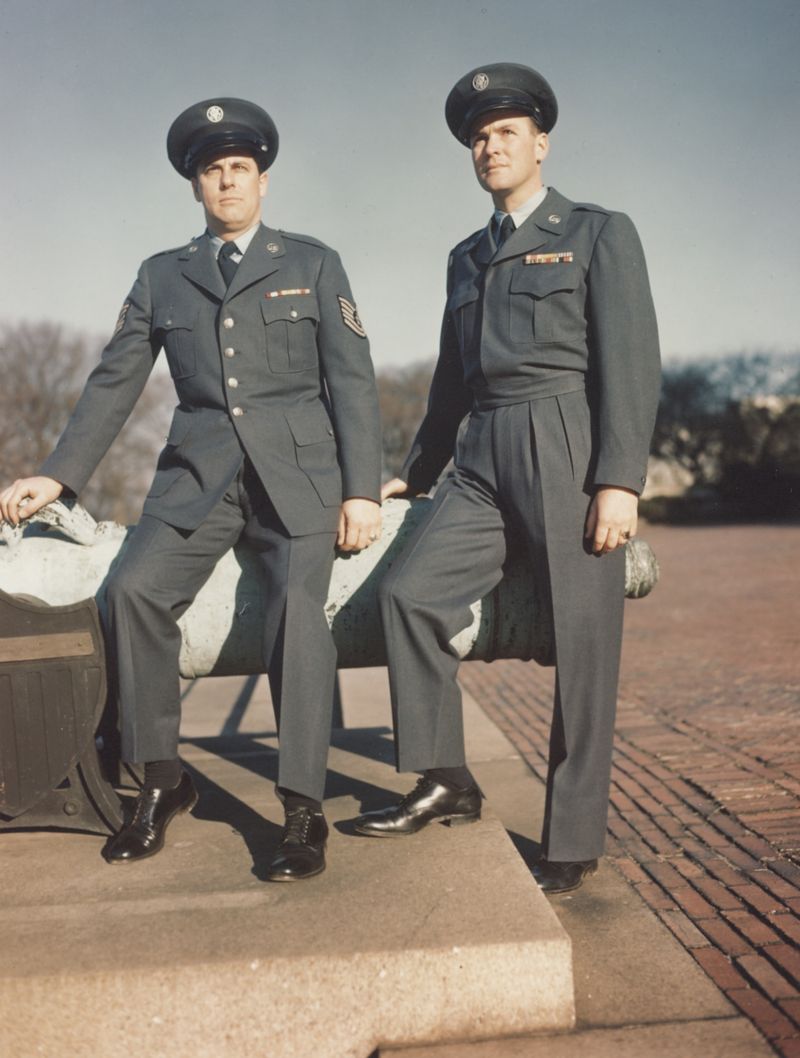
Military uniforms in these years were a blend of functionality and formality. Soldiers wore well-fitted, crisp attire that conveyed authority and discipline. The uniforms were often adorned with badges that signified rank and achievements.
Attention to detail was paramount, with polished boots and well-ironed clothes being mandatory. Uniforms represented not just personal pride but also the nation’s identity.
On special occasions, ceremonial uniforms added a touch of grandeur, showcasing intricate designs and brighter colors, reflecting both heritage and pride.
9. Housewife Attire
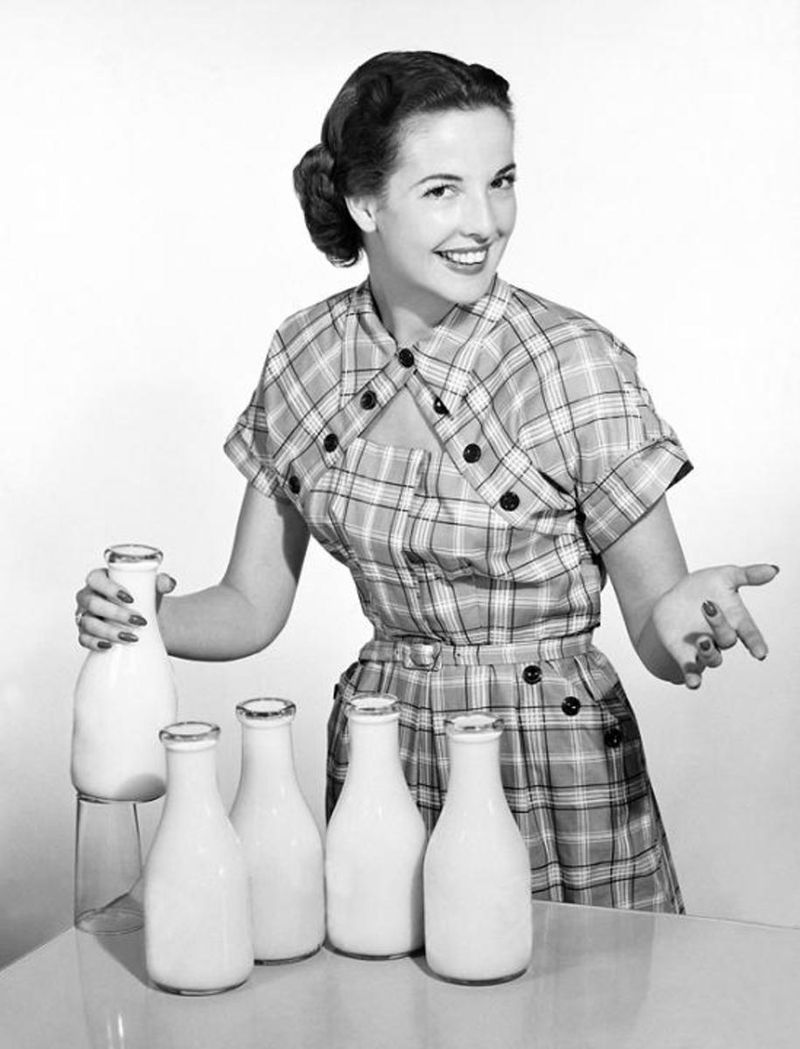
The image of the 1950s housewife is iconic, characterized by a well-groomed appearance dedicated to domestic life. Women often wore floral dresses paired with aprons while managing household duties.
These outfits were practical yet stylish, designed to maintain femininity while engaging in everyday tasks. Hair was impeccably styled, reflecting the era’s focus on appearance.
Housewife attire was more than just clothing; it was an embodiment of the decade’s domestic ideals. It reinforced traditional gender roles, celebrating the woman’s role as homemaker, and underscored the importance of projecting a polished image even at home.
10. Men’s Formal Evening Wear

Last but not least, formal evening wear for men was the pinnacle of elegance and sophistication. The classic tuxedo, paired with a bow tie, was the standard attire for black-tie events.
This ensemble conveyed a sense of refinement and status. Shoes were polished to perfection, and cufflinks added a touch of luxury.
The formality of men’s evening wear was a reflection of the decade’s emphasis on tradition and decorum. It was about making a statement of class and respectability, ensuring that each appearance reinforced the societal values of elegance and dignity.
